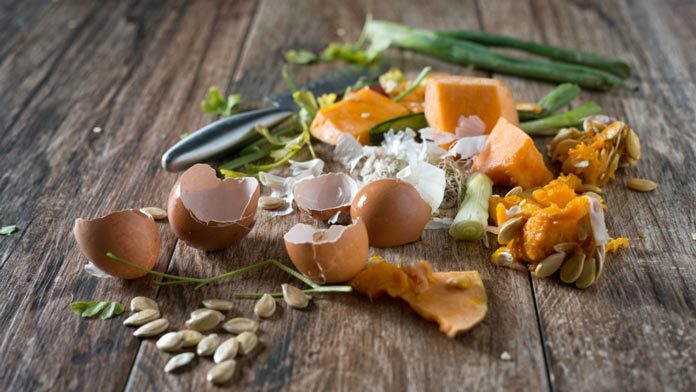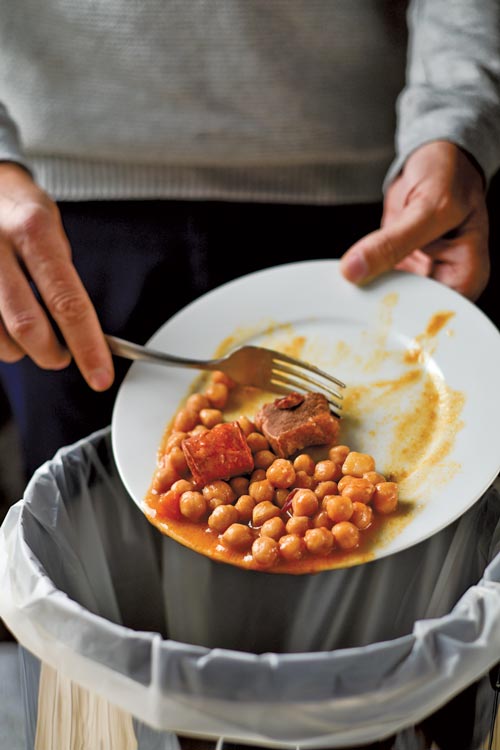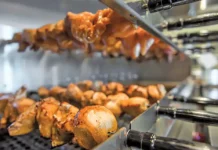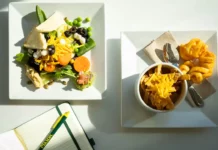
It’s often surprising just how much waste a restaurant creates each year. As our economy has grown, so has our addiction to consumables and convenience. This doesn’t account for any of the back-of-house waste generated via the logistics of all of your suppliers.
If you stop and think about it; it’s probably 2-3 truck loads per week. By the time this product is prepped and ready to eat there is likely a significant amount of waste produced. With this, comes the inevitable question: How does you reduce restaurant waste? These are questions every restaurant facility manager should be contemplating. To aid in solving this problems that every restaurant faces, we’ve outlined some best practices to get you on the right track.
Benchmark
As with all programs, you won’t know how successful it is unless you can measure that success. Therefore, the first step in any restaurant waste reduction program is to audit your current waste. Monitor your kitchen staff to see what they’re discarding. Keeping a chart or tally can certainly help as you work to identify areas of opportunity. During this waste audit your goal is really to find out what it is that you’re throwing away. You should also be able to categorize each of these commodities as well. The Environmental Protection Agency provides average weights for thousands of materials that should help you arrive at how many pounds (or tons) of material you’re generating. At the end of the exercise you should try to have your waste categorized into Organics, Recyclables and Landfill. From here you should look to create a tracking program that you can reference back to on a regular basis in order to measure the success of the various program adjustments that you’ll put into place.
 Source Reduction
Source Reduction
This step again starts with monitoring what is being thrown away and why. Perhaps your typical Wednesday crowd doesn’t care for your brussels sprouts and you end up throwing away several pounds of brussels sprouts every Wednesday. Create a waste log and have your employees write down what they’re throwing away (in this example, brussels sprouts) and the reason why (overproduction). After a few weeks you’ll hopefully be able to discover some trends and can start making program adjustments to reduce waste; in this case, making fewer brussels sprouts on Wednesdays. While it sounds like a simple concept, this can actually be quite complex given the size and scope of menus across various restaurant facilities. Another example of source reduction is to start working with your suppliers to reduce the amount of packaging they provide to you. Perhaps you can start working with them to identify key things like boxes and pallets that are routinely being left at your facility. With that knowledge in hand you can work with them to backhaul the pallets to their facility and possibly start using reusable totes to package your goods rather than cardboard boxes.
Food Donation
I’d be remiss if I didn’t take a second to mention this option. There are typically a lot of food items generated in a commercial kitchen that could be donated to those who are less fortunate before they’re considered restaurant waste. Forging a partnership with local shelters or food banks can be of great benefit in this case, in that you can donate any good, unused food to these organizations. Through this donation process you’re able to capitalize on a tax benefit while also enjoying the cost savings in your disposal bill. This does require a strong partnership with your local charitable organization as well as a thought out and organized process in the back-of-house to work smoothly.
Recycling
It’s actually astounding what you’re able to recycle when the proper systems are in place. There are hundreds of technological advancements made every year in the solid waste industry allowing us to recycle more and more. This is probably one of the simplest, easiest ways to work toward restaurant waste reduction. Start by developing a program for your cardboard boxes working with staff to separate, flatten and stack them. If you have a separate recycling dumpster, you can use that for the cardboard. Depending on how much you generate, you may want to explore a mini baler in which you could sometimes get paid for your cardboard. While cardboard collection services aren’t free, they’re typically always cheaper than trash because of the value of the products.
With that underway, you can then look to your plastics. Numerous communities throughout the United States offer a commingled recycling service. This means that you can mix cardboard, paper, plastic, glass (depending on area) and metals all in the same bin. The service provider then takes it to a Material Recovery Facility (MRF) where it’s sorted and recycled accordingly. Where these services are available, they offer the best value in starting a recycling program and are typically cheaper than trash.
Measure, Adjust, Repeat
Achieving zero waste or working toward any restaurant waste reduction goal is all about patience. It’s important to know that this won’t happen overnight. The key is to consistently track the results of the changes you’ve made and work toward incremental additional changes to help make a bottom line impact. If you’re not seeing the results you’re after, then adjust and measure again until you find a happy medium. There are several tools available to you including software platforms, consultants, various equipment, etc., that can also be of assistance. Never forget that your waste and recycling service provider likely has some free services to help you reduce waste and increase recycling as well. They should be seen as a valued partner. Once implemented you should not only be able to inform your customers about the impact you’re having for the environment, but you should also be enjoying savings results to the bottom line.
Matthew S. Hollis is the co-founder and president of Elytus Ltd., a Columbus, Ohio-based industry leader in food waste sustainability technology. Founded in 2007, Elytus partners with brands such as Whole Foods, Red Robin, Ted’s Montana Grill, Cinemark Theaters and others to reduce waste. Hollis also spearheaded the renovations of Elytus’ headquarters into a 100% zero-waste facility. For more information, visit www.elytus.com.
























Comments are closed.